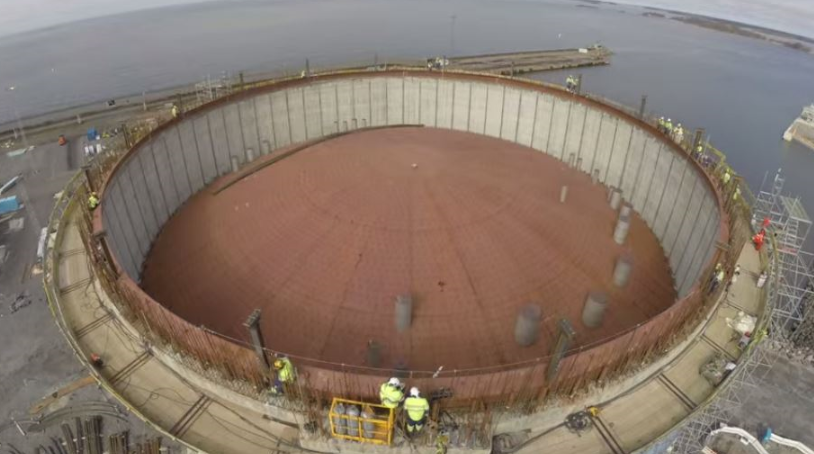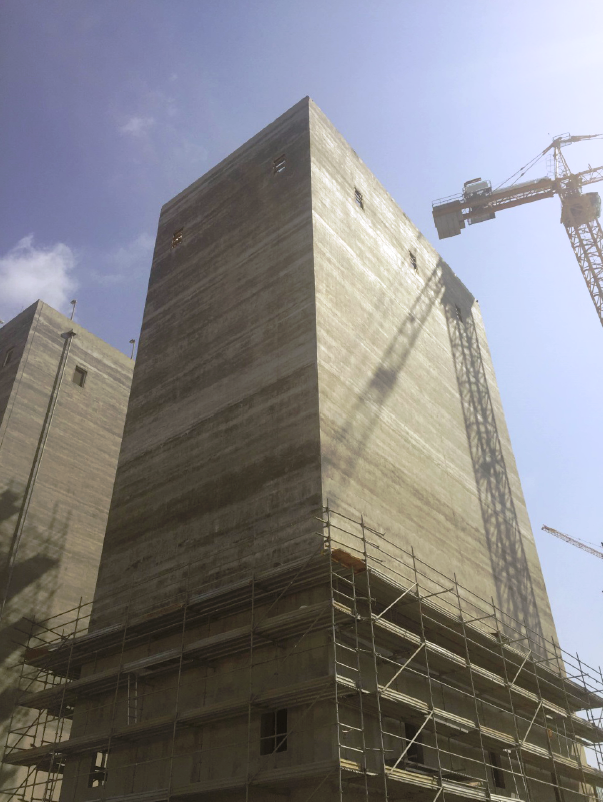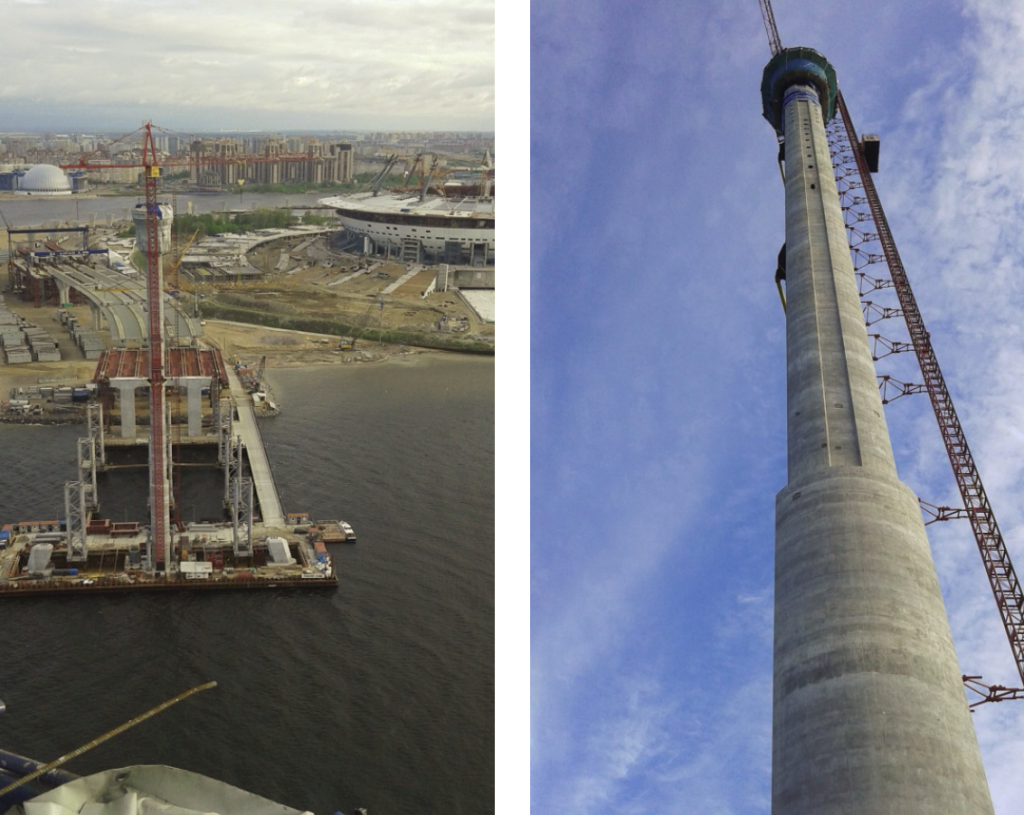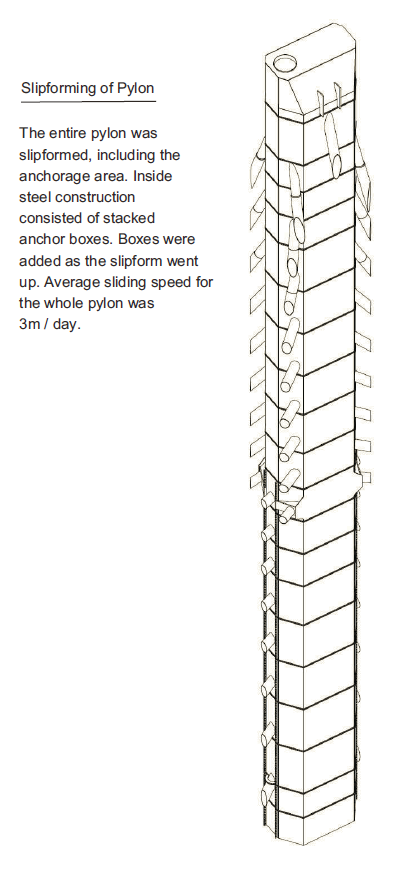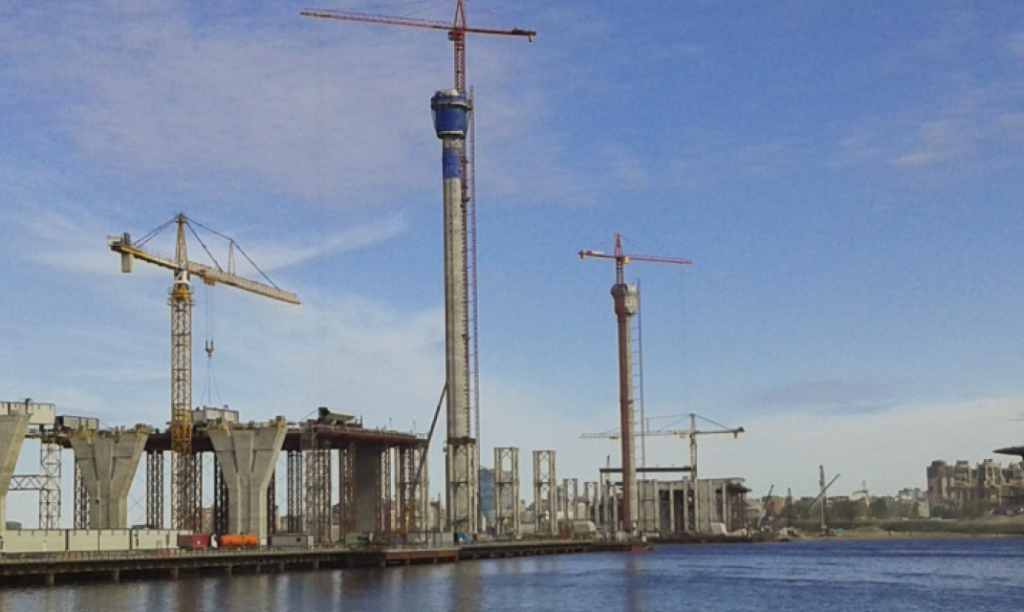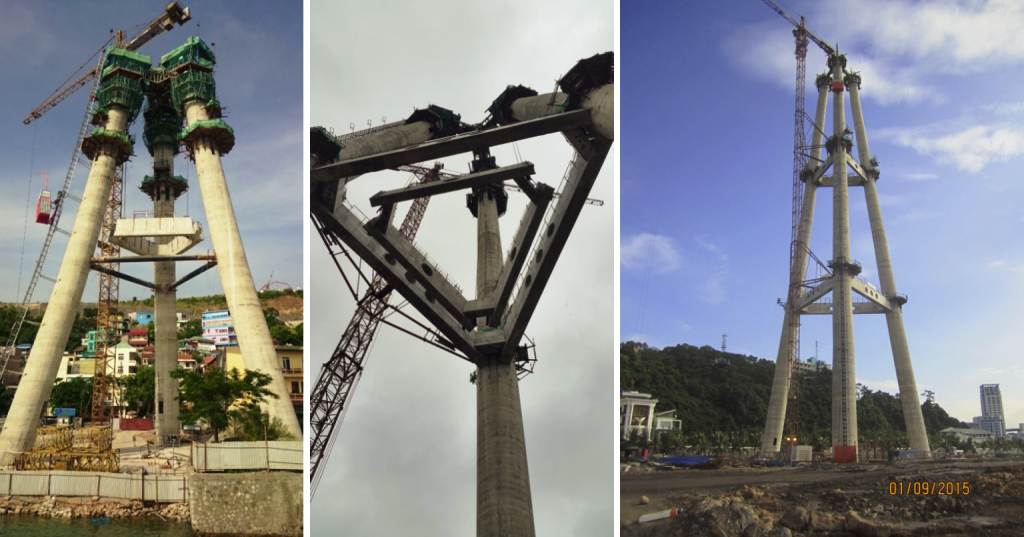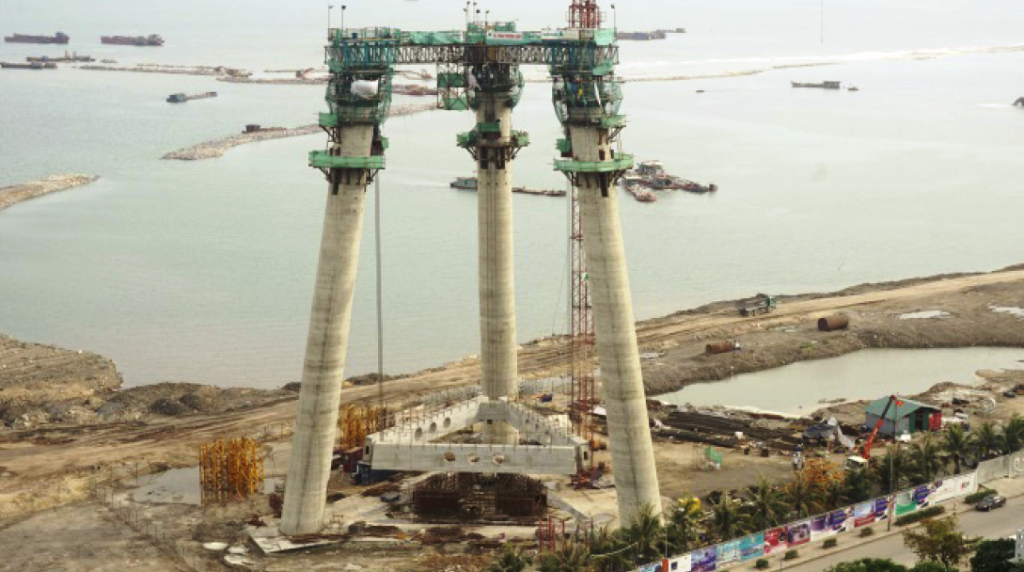Port of Tahkoluoto, Finland
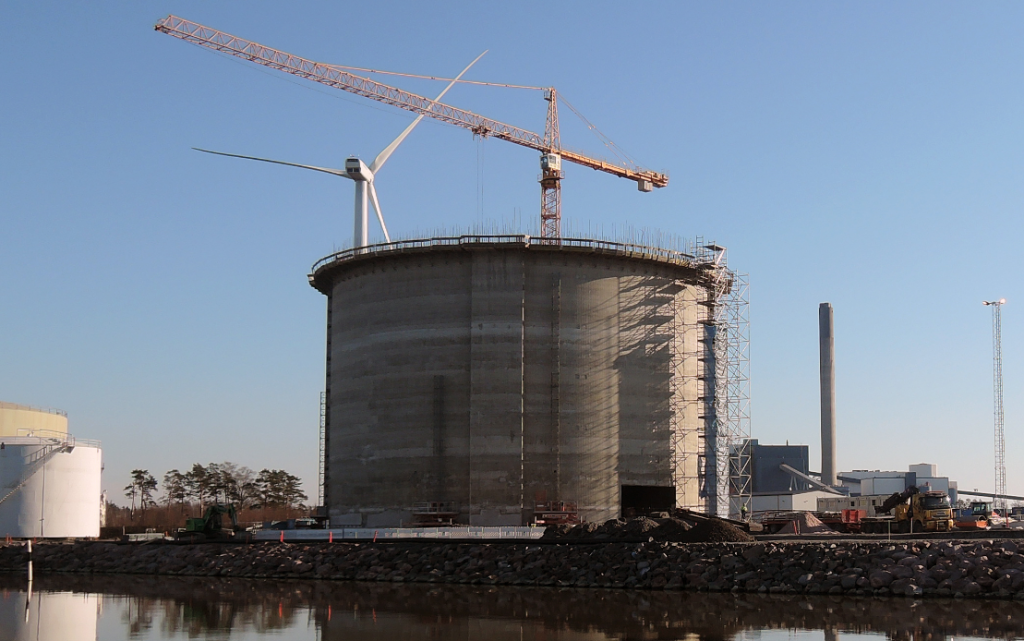
LNG Tank slipformed by Gleitbau GmbH.
Finland’s first Liquefied Natural Gas (LNG) Terminal is being built by Skangas at the oil and chemical harbor of the Port of Tahkoluoto in Pori, on the west coast of Finland. The estimated completion date for the terminal is fall of 2016. Total LNG storage capacity will be 30,000 cubic meters.

Tank during slipforming showing radial guide ropes.
The LNG tank has a final height of 35 m and an outside diameter of 42 m. The walls of the tank were slipformed truly round with the help of radial wire ropes coming together at the geometric center of the tank. Additional ground-based lasers ensured the tank was constructed true and vertical and also confirmed perfect roundness. By adding enough lasers around the perimeter, there were no deviations from perfectly round to speak of. This is an important step in achieving the desired accuracy in tank geometry. High precision is required in the wall geometry as the steel dome has to accurately fit the inside of the tank. These steel roofs are normally assembled on the ground and lifted in place with hydraulic heavy lifting techniques or with internal air pressure. Welders then attach the roof to a steel ring embedded in the concrete wall. A final concrete layer is poured over this steel dome to complete the tank structure.
The general contractor on the project is a partnership of Neste Jacobs Oy, KVL-Tekniikka Oy and FCC Industrial. Concrete subcontractor Destia Ltd. hired Gleitbau GmbH for slipforming the tank walls. Slipforming was completed in 2014. Safety during construction was a high priority and slipforming proved to be very safe once again, as during slipforming the formwork is supported at numerous points at all times and is never released from the structure below.
Gleitbau GmbH is a leading international slipform contractor, working in North America and around the world. Formed in 1961, the company executes 80 to 100 slipform projects every year. The typical scope of work includes the supply of the slipforming equipment, engineering, concrete mix design, geometry control and onsite supervision of the slipforming operation, mostly for general contractors. For more information please contact Michael Veegh.

